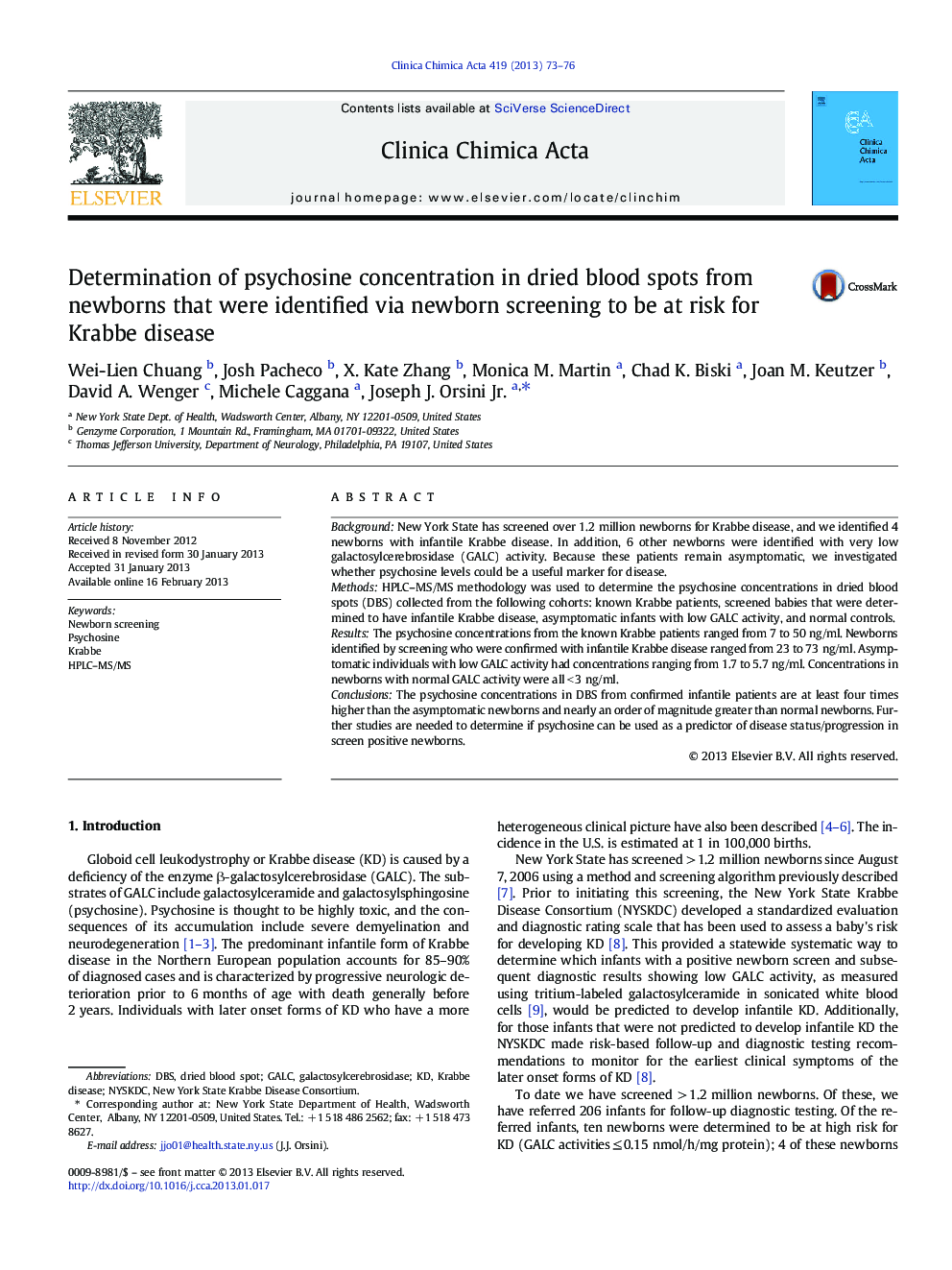| Article ID | Journal | Published Year | Pages | File Type |
|---|---|---|---|---|
| 1965611 | Clinica Chimica Acta | 2013 | 4 Pages |
BackgroundNew York State has screened over 1.2 million newborns for Krabbe disease, and we identified 4 newborns with infantile Krabbe disease. In addition, 6 other newborns were identified with very low galactosylcerebrosidase (GALC) activity. Because these patients remain asymptomatic, we investigated whether psychosine levels could be a useful marker for disease.MethodsHPLC–MS/MS methodology was used to determine the psychosine concentrations in dried blood spots (DBS) collected from the following cohorts: known Krabbe patients, screened babies that were determined to have infantile Krabbe disease, asymptomatic infants with low GALC activity, and normal controls.ResultsThe psychosine concentrations from the known Krabbe patients ranged from 7 to 50 ng/ml. Newborns identified by screening who were confirmed with infantile Krabbe disease ranged from 23 to 73 ng/ml. Asymptomatic individuals with low GALC activity had concentrations ranging from 1.7 to 5.7 ng/ml. Concentrations in newborns with normal GALC activity were all < 3 ng/ml.ConclusionsThe psychosine concentrations in DBS from confirmed infantile patients are at least four times higher than the asymptomatic newborns and nearly an order of magnitude greater than normal newborns. Further studies are needed to determine if psychosine can be used as a predictor of disease status/progression in screen positive newborns.
► HPLC–MS/MS is used to quantify glucosylsphingosine and psychosine in dried blood spots (DBS). ► Infantile Krabbe disease (KD) patients had very elevated psychosine concentrations in DBS. ► Infants with very low GALC activities that were asymptomatic for KD had low psychosine in DBS. ► Additional studies are needed to determine if psychosine is a predictive marker for KD.
